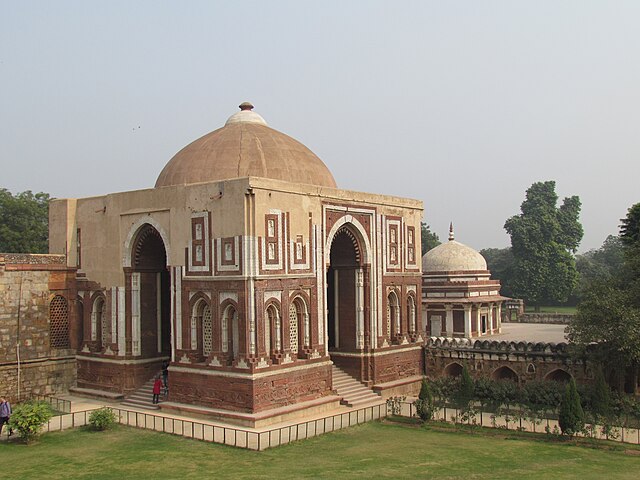Muhammad Bakhtiyar Khalji
Ikhtiyār al-Dīn Muḥammad Bakhtiyār Khaljī, also known as Bakhtiyar Khalji, was a Turko-Afghan military general of the Ghurid ruler Muhammad of Ghor, who led the Muslim conquests of the eastern Indian regions of Bengal and parts of Bihar and established himself as their ruler. He was the founder of the Khalji dynasty of Bengal, which ruled Bengal for a short period, from 1203 to 1227 CE.
Muhammad bin Bakhtiyar Khalji and his fellow warrior Subahdar Awlia Khan leading troops in the slaughter of Buddhist monks at the Nalanda University. Early 20th-century illustration.
Bengal coinage of Bakhtiyar Khalji (1204–1206 CE). Struck in the name of Mu'izz al-Din Muhammad, dated Samvat 1262 (1204 CE). Obverse: Horseman with Nagari legend around: samvat 1262 bhadrapada "August, year 1262". Reverse: Nagari legend: srima ha/ mira mahama /da saamah "Lord Emir Mohammed [ibn] Sam".
Another type of Bengal coinage of Muhammad Bakhtiyar Khalji as governor (1204–1206 CE). Obverse: horseman galloping, holding lance with Devanagari legend around (śrimat mahamada samah "Lord Mohammed [ibn] Sam"). Reverse: name and titles of Mu'izz al-Din Muhammad bin Sam in Arabic. Struck AD 1204–1205. This is his earliest coinage in Bengal, using both Sanskrit and Arabic legends.
The Khalji or Khilji dynasty was the second dynasty which ruled the Delhi sultanate, covering large parts of the Indian subcontinent for nearly three decades between 1290 and 1320. It was founded by Jalal ud din Firuz Khalji.
Coin of Tegin Shah, described as "Iltäbar (sub-King) of the Khalaj", dated to the year 728 CE.
Coinage of Jalaluddin Firuz Khalji. Delhi mint. Dated AH 691 (1291-2 AD). Legend citing the caliph Al-Musta'sim.
The Alai Darwaza, completed in 1311 during the Khalji dynasty.
Gold coinage of Alauddin Khalji (AH 695-715 / AD 1296–1316). Dar al-Islam mint. Dated AH 709 (AD 1309–10).







